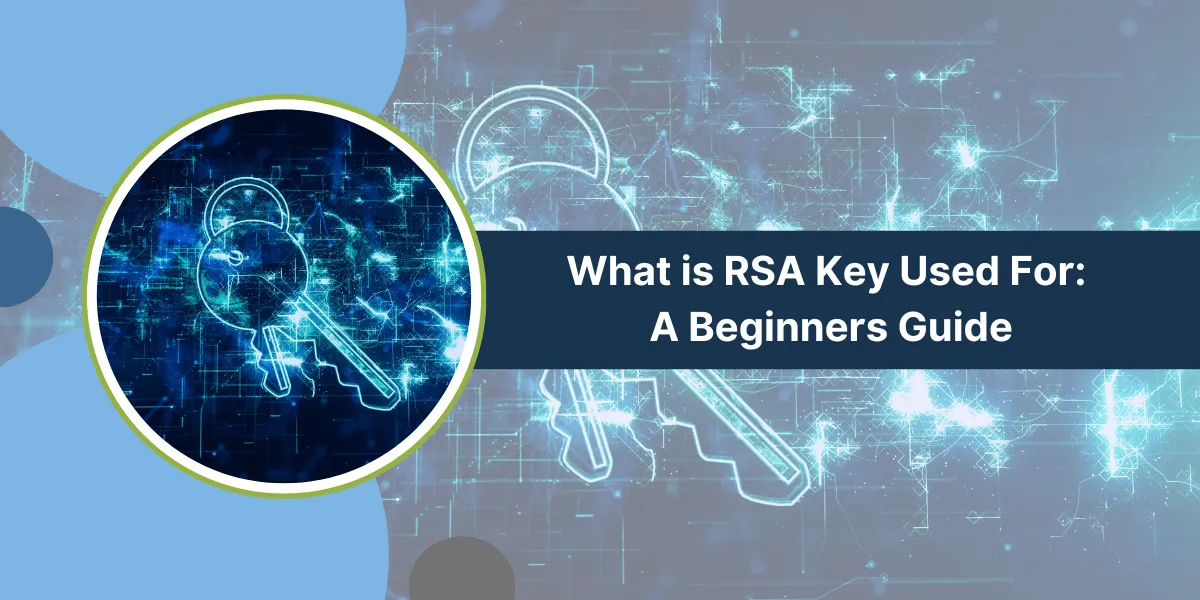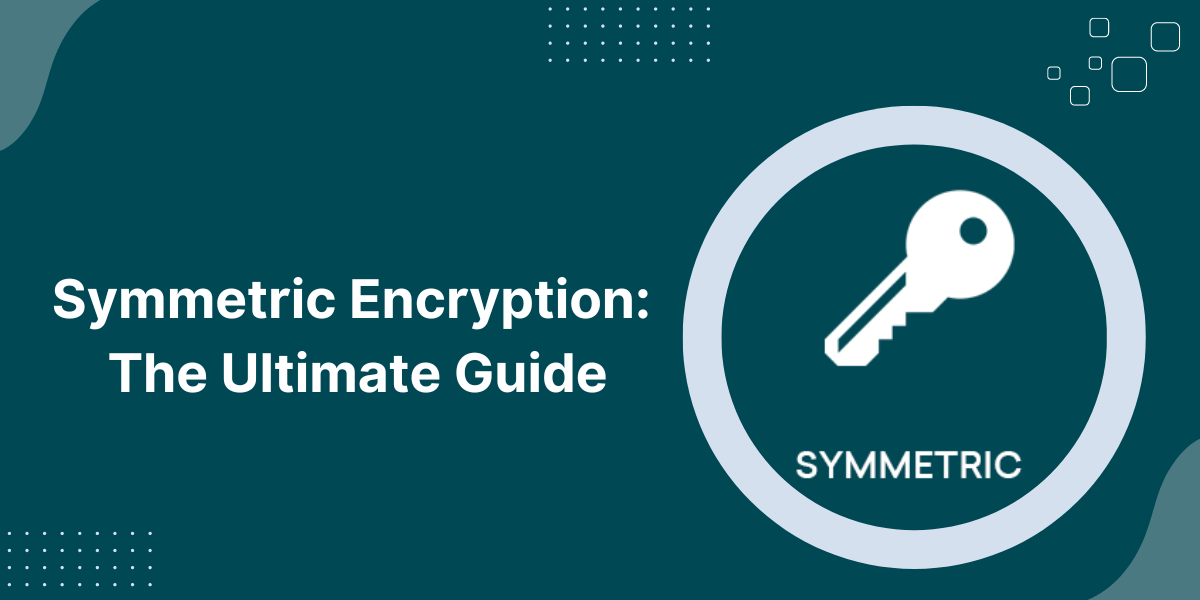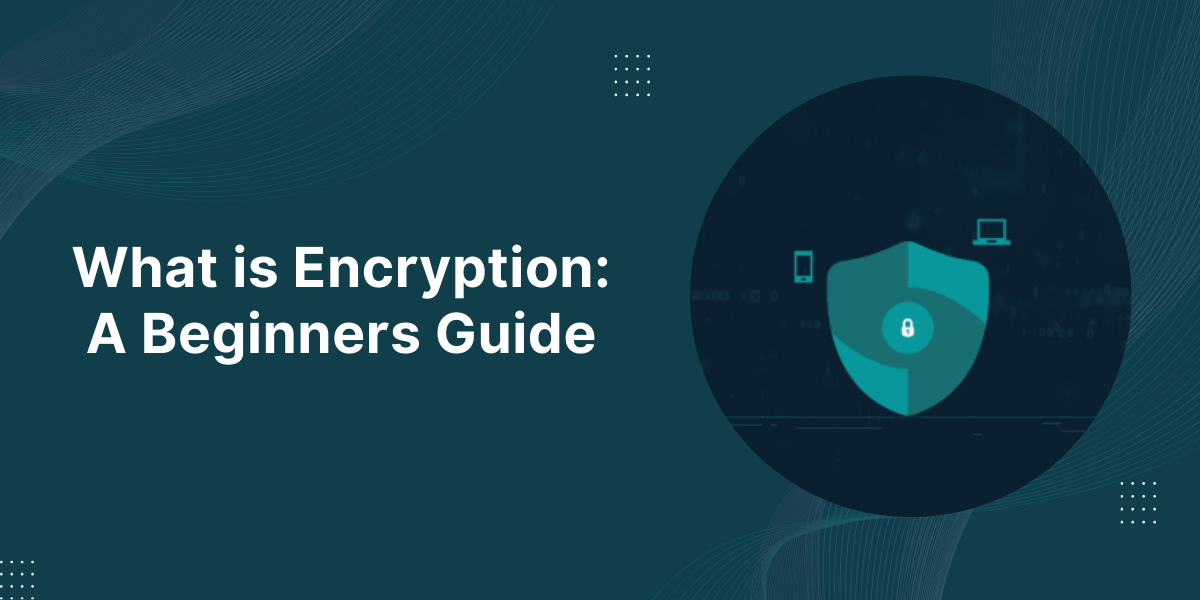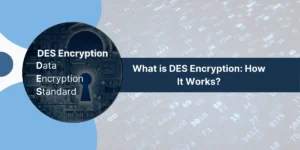A Basic Overview of RSA Key
RSA (named after its co-creators – Ron Rivest, Adi Shamir, and Leonard Adleman) is one of the first public-key cryptosystems and is widely used for secure data transmission. It allows two parties – a sender and receiver to communicate securely without having to exchange a secret key over an insecure channel beforehand.
This is achieved by using a mathematically linked public and private key pair. The public key encrypts data, while only the paired private key can decrypt it. This asymmetric approach allows anyone to encrypt data using the public key, but only the intended recipient with the private key can decrypt it.
In addition to encryption, RSA key pairs enable digital signatures that verify the authenticity and integrity of electronic documents or messages. The private key digitally signs the data, while the public key verifies the signature.
Some Common Applications that Rely on RSA Encryption
- Secure web browsing using HTTPS
- Secure email transmission using S/MIME or PGP
- User authentication through digital certificates
- VPN tunnels to connect remote networks securely over the internet
- Code signing to verify the authenticity and integrity of software
- Digital rights management for protecting copyrighted content
The security of RSA stems from the practical difficulty of factoring large prime numbers. An RSA public key consists of a product of two very large prime numbers, while the private key contains the primes themselves. Recovering the private key from the public key alone is considered computationally infeasible.
Key Takeaways
- RSA keys are used to encrypt/decrypt sensitive data and digital signatures. Public and private key pairs are generated to enable asymmetric encryption.
- The public key is used to encrypt data, while only the paired private key can decrypt it. This allows sensitive data to be securely transmitted.
- Digital signatures also rely on RSA key pairs. The private key signs the data, while the public key verifies the signature.
- RSA is a popular cryptosystem as it provides a high level of security based on the difficulty of factoring large prime numbers.
- RSA keys come in different key lengths, such as 1024-bit, 2048-bit, and 4096-bit. Longer key lengths provide greater security but reduced performance.
- Proper key management, including generation, distribution, storage, and rotation, is critical to achieving RSA’s full security benefits.
How RSA Key Pairs Work
An RSA key pair consists of a public key and a private key. Both keys are large integers that are mathematically related, but it is extremely difficult to derive one key from the other.
Here’s an overview of how RSA key pairs work:
Key Generation
To generate an RSA key pair:
- Choose two large random prime numbers p and q.
- Compute n = p x q. This number n is used as the modulus for both public and private keys.
- Calculate phi(n) = (p-1) x (q-1). Phi is Euler’s totient function.
- Pick an integer e such that 1 < e < phi(n) and e is coprime to phi(n). This e is the public exponent.
- Determine d such that d x e mod phi(n) = 1. d is the private exponent.
The public key is the pair (n, e) while the private key is (n, d). The parameters n and e can be shared openly as public keys, while d must be kept secret.
Encryption
Alice wants to send a message M to Bob. To encrypt M using Bob’s public key (n, e):
- Alice gets Bob’s public key (n, e).
- Represent the message M as a positive integer m < n.
- Compute the ciphertext c = (m^e) mod n.
- Send the ciphertext c to Bob.
Decryption
To decrypt the ciphertext c using his private key (n, d), Bob performs:
- Bob receives ciphertext c from Alice.
- Compute m = (c^d) mod n using his private key (n, d).
- m is the decrypted message.
Since only Bob has the private key d, he can decrypt c to retrieve the original message m.
Digital Signatures
To sign a document M using her private key (n, d):
- Alice represents M as integer m < n.
- Compute signature s = (m^d) mod n using her private key.
- Attach s to document M.
To verify Alice’s signature s on M using her public key (n, e):
- Bob detaches signature s from M.
- Compute m = (s^e) mod n using Alice’s public key.
- Check if m matches the document M. If yes, M was signed by Alice.
Since only Alice has the private key d, the signature s can only have been generated by her. The public key e verifies that s corresponds to M.
This confirms that M originated from Alice and has not been tampered with since signing.
RSA Key Lengths
RSA keys are generated at different lengths, such as 1024, 2048, and 4096 bit keys. The key length refers to the size of the modulus n measured in bits.
Longer key sizes improve security against brute force attacks but also impact performance as the computational cost increases for key generation, encryption/decryption, and digital signatures.
Here are some guidelines on RSA key lengths:
- 1024-bit: Offer minimal security. It should not be used for new keys, but legacy keys may still exist.
- 2048-bit: For now, it is considered secure against attacks. It is widely used as a standard for many applications. It offers good security with decent performance.
- 4096-bit: Very secure against brute force for the foreseeable future. Used for very sensitive long-term data. Performance impact is significant.
- 8192+ bit: Extremely secure but with a high-performance penalty. It is only used in special cases where ultimate security is critical.
So, 2048-bit RSA keys provide sufficient security for most purposes today. 4096-bit keys are recommended for extremely valuable data expected to stay secret for many decades.
RSA Key Management Best Practices
To fully realize the security benefits of RSA, proper key management is essential. Some best practices include:
Key Generation
- Use a cryptographically secure pseudo-random number generator with a good seed when generating the primes p and q.
- Pick large enough key sizes based on your security needs. At least 2048-bit keys are recommended.
- Use different keys for different purposes like encryption, signatures, and key exchange.
Key Distribution
- Distribute public keys securely to prevent man-in-the-middle attacks. Sign public keys with a certificate authority.
- Protect private key confidentiality during distribution to intended recipients. Use symmetric encryption.
Key Storage
- Store private keys securely in a cryptoprocessor like a hardware security module or trusted platform module.
- Restrict access to private keys based on roles. Backup keys securely offline.
- Store public keys openly in certificates or public directories after validation.
Key Changes
- Periodically generate new keys and phase out old keys to limit exposure.
- Reissue keys after a security breach or when employees leave.
- Use key rotation policies based on corporate policies or compliance requirements.
Proper RSA key management ensures keys remain secure throughout their lifetime and maximizes the confidentiality, integrity, and authenticity provided by RSA cryptography.
Common Uses of RSA Encryption
Here are some of the most popular uses of RSA encryption:
Secure Web Browsing with HTTPS
HTTPS websites use RSA certificate keys to create an encrypted TLS tunnel between the browser and the server. The server’s RSA public key secures the session keys used for symmetric encryption of web traffic, protecting against eavesdropping and man-in-the-middle attacks.
Email Encryption
Protocols like S/MIME and PGP use RSA public keys to encrypt emails. The recipient’s RSA public key secures the email while their private key decrypts it. This provides confidentiality against unauthorized access during transmission.
User Authentication
RSA key pairs in public key certificates securely authenticate users. Private keys digitally sign logins, while public keys verify the signatures. The secure handshake prevents phishing and password theft.
Digital Signatures
Code signing, document signing, and other digital signature use cases rely on RSA public-private key pairs to provide authenticity, integrity, and non-repudiation. Digital signatures prevent tampering and prove origin.
Secure Remote Access
VPN access to corporate networks is protected by establishing RSA-encrypted tunnels between endpoints. This allows remote users to access internal resources securely through external untrusted networks.
Content Protection
DRM systems use RSA public keys to encrypt digital content like video, music, and ebooks. Only authorized recipients can decrypt the content with their private keys. This controls the distribution and prevents piracy of digital media.
Software Verification
Code signing uses digital signatures to validate the authenticity and integrity of software releases, updates, and patches. This prevents the distribution of malware disguised as legitimate software.
Secure Data Transmission
Sensitive data, such as financial information, healthcare records, PII, classified data, etc., can be securely transmitted by encrypting with RSA public keys. Only the intended recipients can decrypt it.
Authentication and Key Exchange
Protocols like SSL, TLS, and SSH rely on RSA public keys for server authentication and initial asymmetric key exchange to establish secure encrypted sessions for data transmission.
Blockchains
RSA key pairs enable user identities on blockchain platforms and the signing of blockchain transactions, while private keys authorize blockchain transactions.
Digital Certificates
X.509 digital certificates use RSA key pairs to validate identity. The certificate authority signs certificates with their private key while the public key verifies them.
Random Number Generation
RSA’s probabilistic encryption is used to generate cryptographically secure pseudo-random numbers required for encryption keys, salts, and authentication.
Hardware Security Modules
HSMs use tamper-resistant RSA key storage to protect master keys used for cryptographic processing and key management. RSA secures the HSM appliance itself.
These are some of the most common applications that leverage RSA encryption for enhanced data security and privacy in various use cases. RSA’s versatility and security make it an essential part of the modern cryptographic landscape.
Final Words
RSA encryption remains one of the most versatile and widely used public key cryptosystems even decades after its invention. Its elegant algorithm provides strong security, leveraging the power of public-private key pairs and the difficulty of factoring large prime numbers.
RSA enables secure communication, user authentication, digital signatures, and more. Proper key management is crucial to realize RSA’s full benefits. With computational power increasing, key length guidelines will evolve.
However, RSA’s mathematical foundation continues to provide sufficient security and trust for sensitive data protection across many applications. Used judiciously, RSA brings the advantages of public key cryptography to the modern connected world.
Frequently Asked Questions about RSA Keys
How are RSA public and private keys related?
RSA key pairs are mathematically linked through the modulus n. The public key consists of the modulus n and public exponent e. The private key consists of the same modulus n but a different private exponent d. The values of e and d are related mathematically, but it is infeasible to compute one from the other due to the large size of the primes used.
What key sizes are most commonly used for RSA encryption?
2048-bit is the recommended and most widely used key size today for RSA encryption. 1024-bit keys are considered insecure. 4096-bit keys offer stronger long-term security but are slower. Keys beyond 8192-bit are only used in very specialized applications requiring extreme security.
Can RSA private keys be recovered if you have the public key?
No, RSA private keys cannot be derived from public keys alone because doing so would involve factoring the public modulus n, a mathematical operation considered infeasible for large keys based on current computing capability. The public key alone does not reveal any information about the private key.
Is RSA encryption used alone or along with symmetric encryption?
In practice, RSA is often used together with symmetric encryption. Keys for symmetric ciphers like AES are encrypted using RSA public keys, while the encrypted data uses the faster symmetric cipher. The combined approach provides both the convenience of public key RSA and the speed of symmetric ciphers.
Which hash functions are used with RSA for digital signatures?
Common hash functions used with RSA digital signatures include SHA-2 (SHA-256, SHA-512) and SHA-3. The data hash is encrypted with a private key to create the signature. Weaker hash functions like MD5 and SHA-1 are avoided as they compromise RSA signature security.
What are some best practices for protecting RSA private keys?
Store RSA private keys securely in hardware security modules. Restrict access through physical security and role-based access controls. Use strong passphrases. Encrypt the keys during transmission and storage. Back up the keys securely. Rotate keys periodically. Destroy old keys securely when replacing them.
How does RSA key length impact the security and performance?
Longer key sizes improve security by making key cracking harder. However, they also significantly increase computational overhead and result in slower performance for key generation, encryption, decryption, and signing operations. So, the optimal key length depends on finding the right balance between security and performance.

Priya Mervana
 Verified Web Security Experts
Verified Web Security Experts
Priya Mervana is working at SSLInsights.com as a web security expert with over 10 years of experience writing about encryption, SSL certificates, and online privacy. She aims to make complex security topics easily understandable for everyday internet users.



